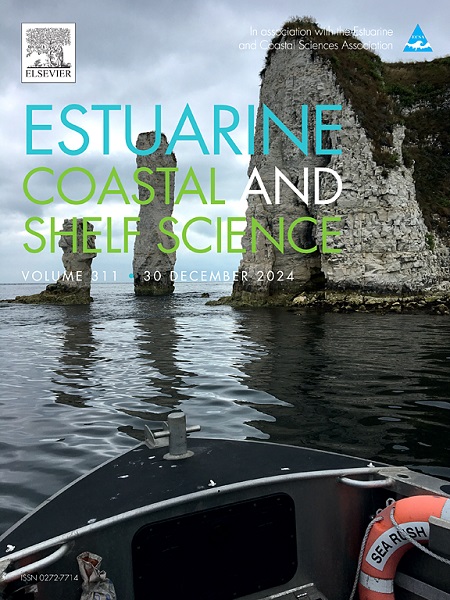High dominance renders reef fish trophic interactions vulnerable to human pressures in oceanic islands
IF 2.6
3区 地球科学
Q1 MARINE & FRESHWATER BIOLOGY
引用次数: 0
Abstract
Human activities alter marine ecosystems by modifying their biodiversity, often disrupting trophic interactions that determine their structure and functioning. Human influence on trophic interactions mediated by fishes have traditionally been investigated through the lens of indirect proxies, such as the biomass of trophic groups. However, fish biomass alone may not adequately capture the nuanced responses of fish to different levels of human pressures, such as changes in the nature and intensity of trophic interactions. Here, we combined visual counts and remote video surveys to assess how human pressures influence spatial patterns in reef fish biomass and feeding pressure in an oceanic island in the eastern Atlantic Ocean. The biomass and feeding pressure of reef fish assemblages strongly declined across the human pressure gradient, by two- and five-fold, respectively. These patterns were primarily driven by fishery targeted species, which comprised 87 % of fish biomass and 93 % of fish feeding pressure. Despite this marked imprint of human pressures, we found distinct responses among trophic groups. The biomass of omnivores and herbivores declined by 19- and 3-fold respectively, while feeding pressure by these groups declined by 6- and 4-fold, respectively. In contrast, the effect of human pressures on piscivores, invertivores and planktivores was weak or negligible. Importantly, some trophic groups exhibited stronger declines in fish feeding pressure than biomass, whilst others exhibited lower declines. This highlights the nuanced responses of fishes to human exploitation, with compensatory mechanisms, and calls for more detailed studies to identify how humans disrupt trophic interactions and their potential flow on effects on energy and material fluxes.

在海洋岛屿上,高优势使得珊瑚鱼的营养相互作用容易受到人类压力的影响
人类活动通过改变海洋生态系统的生物多样性而改变海洋生态系统,往往破坏决定其结构和功能的营养相互作用。人类对鱼类介导的营养相互作用的影响传统上是通过间接代用物来研究的,例如营养类群的生物量。然而,仅靠鱼类生物量可能无法充分捕捉鱼类对不同程度的人类压力(如营养相互作用的性质和强度的变化)的细微反应。在这里,我们结合视觉计数和远程视频调查来评估人类压力如何影响东大西洋一个海洋岛屿上珊瑚鱼生物量的空间格局和摄食压力。珊瑚鱼群落的生物量和摄食压力在人类压力梯度中分别下降了2倍和5倍。这些模式主要由渔业目标物种驱动,它们占鱼类生物量的87%和鱼类摄食压力的93%。尽管人类的压力留下了明显的印记,但我们在营养群体中发现了不同的反应。杂食动物和草食动物的生物量分别下降了19倍和3倍,摄食压力分别下降了6倍和4倍。相比之下,人类压力对鱼食动物、无脊椎动物和浮游动物的影响很小或可以忽略不计。重要的是,一些营养类群表现出比生物量更大的鱼类摄食压力下降,而另一些则表现出较小的下降。这突出了鱼类对人类开发的微妙反应,以及补偿机制,并呼吁进行更详细的研究,以确定人类如何破坏营养相互作用及其对能量和物质通量的潜在影响。
本文章由计算机程序翻译,如有差异,请以英文原文为准。
求助全文
约1分钟内获得全文
求助全文
来源期刊
CiteScore
5.60
自引率
7.10%
发文量
374
审稿时长
9 months
期刊介绍:
Estuarine, Coastal and Shelf Science is an international multidisciplinary journal devoted to the analysis of saline water phenomena ranging from the outer edge of the continental shelf to the upper limits of the tidal zone. The journal provides a unique forum, unifying the multidisciplinary approaches to the study of the oceanography of estuaries, coastal zones, and continental shelf seas. It features original research papers, review papers and short communications treating such disciplines as zoology, botany, geology, sedimentology, physical oceanography.

 求助内容:
求助内容: 应助结果提醒方式:
应助结果提醒方式:


